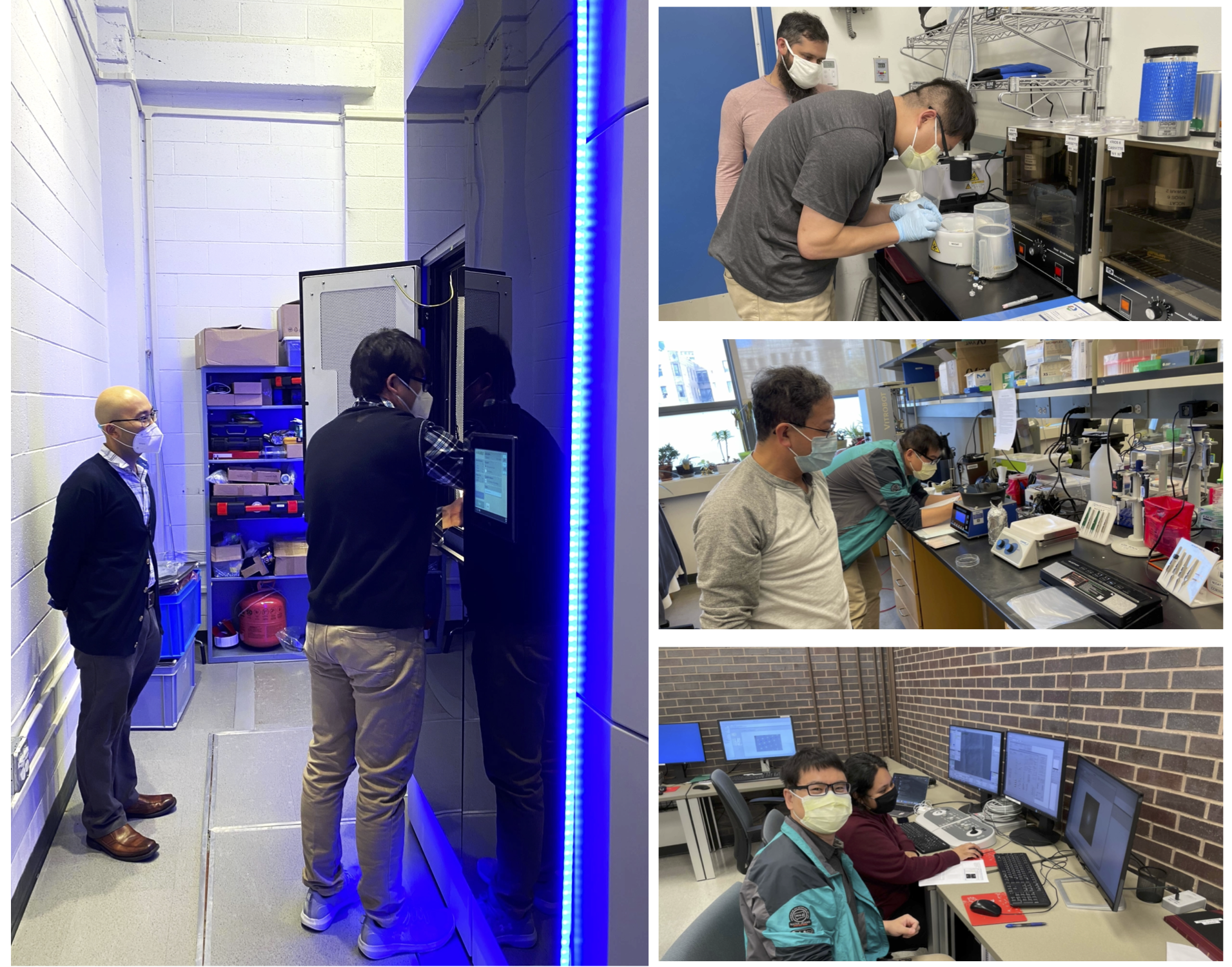Dr. Lijia Jia began his cryoEM journey in 2017 at the Institute of Biophysics at the Chinese Academy of Sciences in Beijing, China, where he used the technique to study chromatin remodelers. His scientific career then took him to postdoc positions at Florida State University where he studied DNA replication complexes again using cryoEM, and finally to UT Health San Antonio (UTHSA) where he has put cryoEM to use studying ubiquitin signaling in DNA repair. UTHSA is building a local cryoEM facility with a TFS Glacios microscope and Lijia is moving into the next stage of his cryoEM career as a Research Assistant Professor & Technical Director of that facility.
From his experience leading cryoEM projects, Lijia was comfortable with preparing samples, devising data collection strategies, and processing data to generate 3D volumes. There were gaps, however, between those skills and what is involved in directing a facility, so he applied for NCCATs TP2 (facility manager training) program. As a user of EM facilities, he didn’t have enough hands-on experience with microscopes. At some facilities, his sessions were run entirely by center staff, or he could run a session after the microscope was setup for optimal performance by someone else. At UTHSA, Lijia will be that member of the center staff, helping users from 7-8 different research groups with a wide variety of projects.
Over the course of four weeks at NCCAT, Lijia saw the full workflow of a single particle cryoEM project that we generally follow with new users and was able to collect data sets on several samples of his own. In that process, he had enough hands-on experience with NCCATs Glacios microscope that he can now confidently align and control the microscope for standard SPA collection and independently collect data using Leginon software. Lijia hasn’t decided if he will use Leginon, or a different data collection software package at UTHSA, but his experience at NCCAT should help him with that decision. Aside from microscopy, he had many conversations at NCCAT about facility maintenance. One particular suggestion he knows he will use when he returns home is implementing checklists to avoid simple mistakes.
Aside from visits to the iconic Central Park and Times Square, for Lijia, a highlight of his visit was the immersive experience of being around enthusiastic cryoEM practitioners all day long. He struck up conversations with most of the staff and found that everyone was interested in talking about cryoEM and giving advice on different aspects of his projects. Among other topics, he learned more about what sample quality metrics are important for optimization, how to choose the best dose for imaging, and how to choose between different cameras. He also liked that it was easy to get fast help. If he was stuck with an issue at the microscope, advice was just a short walk away.
Back home in Texas, NCCAT staff will be further away, but he will still be part of our network and know there are resources available if he needs help. Using knowledge from his training, Lijia looks forward to expanding cryoEM knowledge at UTHSA, training users, from sample prep to data collection, and helping them collect better data to get the high-resolution information they need to make progress on their scientific problems. We wish Lijia success in his new role and look forwarding to seeing new access proposals from him and his users in San Antonio as they are enabled to use cryoEM to advance their projects.
Posted: Jan 2022.

